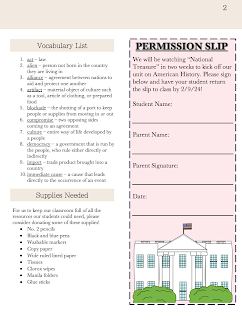Blog Journal 3
Just recently, my mom (a teacher) was working on a promotional video for her school. All was going well until she realized she could not use the song she wanted because she did not have the appropriate copyright permissions. She and I had a conversation about it, which occurred just after our class lesson on copyright and fair use, so it was an interesting area of overlap. It made me realize how as a teacher, these things come into play more often and in more ways than I realized. Whenever teachers put citations on the images and gifs they use in powerpoints, it reminds me that even those creators should be given appropriate credit. I think this is a very important lesson to teach students, so in my classroom, one of the first lessons would be incorporating a discussion about copyright and fair use, making sure that expectations are made abundantly clear to my students so they can do their very best in the class and beyond.
One technology implementation issue is academic dishonesty. Being in college right now is a very unique spot because lots of our content and exams (etc.) are digital, but not every teacher has fully figured out how to navigate that. Some of my professors expect our exams to be closed-note, closed-book, but give open, unproctored exams on Canvas with an unlimited amount of time for the attempt. My peers in many of these classes use this as an opportunity to use their notes and textbooks, which does not always mean they do well but is still not an example of academic honesty. A solution that I propose is making exams more application-based so that it still requires thinking on the part of the students even if they have other resources available (i.e., asking for interpretations based on a book you read instead of just mere facts). Another potential solution could be just ensuring that all exams are proctored; in college this would look like use of the testing center and/or Honorlock (which holds its own privacy concerns, but that is another implementation issue to be discussed another time).
I think generative AI is both hurting and helping student learning. Sometimes having a starting point for an essay (like an outline) or having systems like chatGPT give you answers that are challenging to find elsewhere can be very beneficial for efficiency in completing work. I also know, however, that some students plug in prompts to chatGPT and copy and paste their answers to be submitted for assignments. I don't think this AI and how it relates to classrooms should be something to fear, but teachers should continue educating themselves on how they can best incorporate it into their classrooms, best avoid student misconduct via generative AI, and engage both AI and students in their fullest potential.
For me, in working on the newsletter assignment, the hardest part was coming up with what to say in the fake articles. I understand that was not the purpose of the assignment, but if I am being honest, I had used most of the other features of MS Word before, so all of that came more easily. It has been a while since I have used each of those features, though, so the assignment was a good reminder on just how much you can do in Microsoft Word (and how much you can't compared to other things like Canva for design and style projects). In my future career, I will remember to exercise my creativity but still make sure that things like headings are easy to read! I wanted a few times to choose a font that I then realized may not be very legible to some people.


Hey Lily!
ReplyDeleteThis is such a good design you have. I love how the colors are not too crazy and make this feel like a more calm vibe for the students and parents.